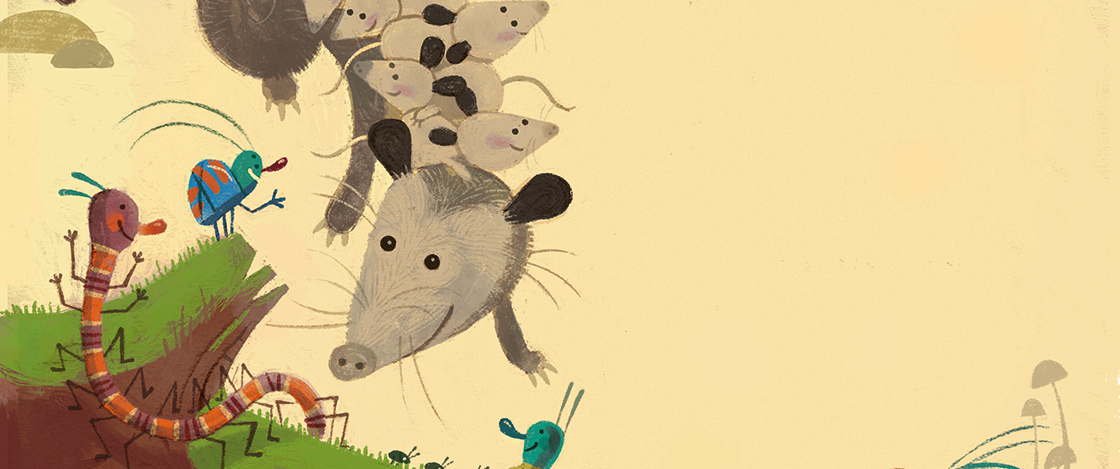
Sightseers
This vivid springtime poem offers a fresh look at a family of opossums.
Learning Objective: Students will consider how an extended metaphor helps them see an event in a new way.
More About the Story
Skills
metaphor, text features, interpreting text, how an idea develops, word choice
Complexity Factors
Levels of Meaning
As the poem describes an opossum family’s walk through the woods, it also draws parallels between animals and humans.
Structure
The poem consists of two stanzas without a rhyme scheme.
Language
The poem includes some higher-level words, such as ambles and acclaimed, as well as a metaphor.
Knowledge Demands
No special knowledge required.
1. Preparing to Read
Set a Purpose for Reading (2 minutes)
- Call on a volunteer to read the Up Close box for the class. Explain that a metaphor can help readers see something in a new way by describing it as something else.
2. Reading the Poem
Read the poem aloud for the class, or play our audio version. Then discuss the following questions.
Close-Reading and Critical-Thinking Questions (15 minutes, activity sheet online)
- Imagine that you saw the poem’s title without any image. What would you think the poem was about? (text features)
Answers will vary, but most students will probably say that they’d picture human tourists exploring a new place and think the poem was about people on an outing.
- The poet calls the adult opossum a “little gray bus.” How is it like a bus? (metaphor)
Like a bus, the opossum has passengers and a route.
- Reread lines 5-7. Why might a sight be famous to opposums? (interpreting text)
A sight might be famous to opossums because it has something many of them enjoy or admire.
- The poem mentions three sights on the tour. What do they have in common? What does this tell you about the purpose of the outing? (how an idea develops)
All of the sights feature food (blackberries, persimmons, insects). You can guess that the mother opossum is showing the little ones where to find good food. (Point out that in real life, opossum mothers carry their young on their back as they hunt for food!)
- How do the words fabled and acclaimed add to the metaphor? (word choice)
These are words that humans use to described famous sights and well-known restaurants.
Answers will vary, but most students will probably say that they’d picture human tourists exploring a new place and think the poem was about people on an outing.
Like a bus, the opossum has passengers and a route.
A sight might be famous to opossums because it has something many of them enjoy or admire.
All of the sights feature food (blackberries, persimmons, insects). You can guess that the mother opossum is showing the little ones where to find good food. (Point out that in real life, opossum mothers carry their young on their back as they hunt for food!)
These are words that humans use to described famous sights and well-known restaurants.
3. Skill Building
Have students create their own animal metaphors. Provide images of animals in nature. Ask students to choose an image and compare it to something that humans do.
